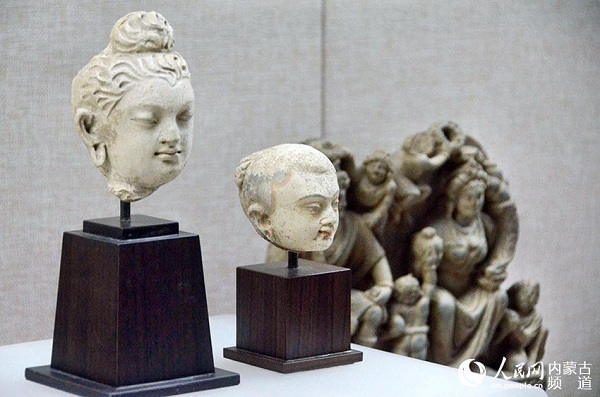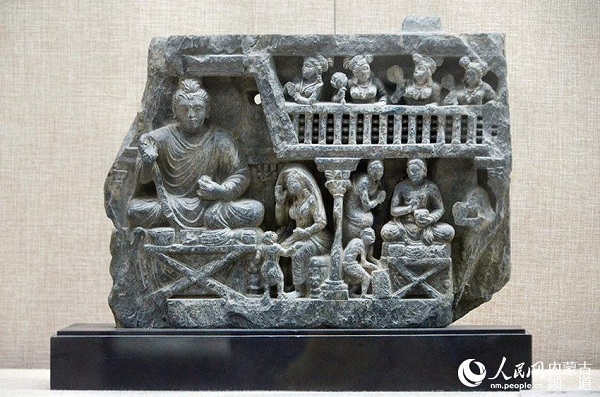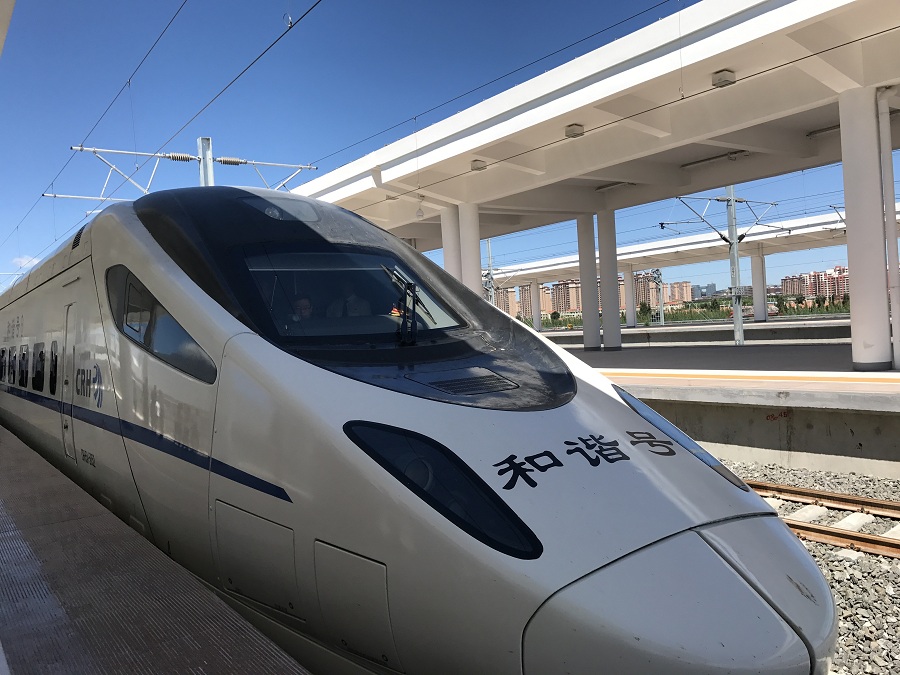Gandhara Buddha statues exhibited in Inner Mongolia
(chinadaily.com.cn)
Updated: 2016-12-09
An art exhibition for Gandhara statues was held at the Inner Mongolia Museum in Hohhot on Dec 6 and will last until March 5 next year, drawing a stream of visitors to trace the glorious history and arts of Buddhism.
 |
|
Statues of Buddhist heads are exhibited at the Inner Mongolia Museum in Hohhot on Dec 6. [Photo/people.cn] |
The exhibition is being jointly sponsored by the Inner Mongolia Museum, the Museum of the Dabaoen Temple Site in Nanjing, and the Guge Museum in Nanjing.
The exhibition showcases 58 priceless Gandhara sculptures made from stone carvings, drawing hundreds of local citizens to visit.
Gandhara
Gandhara is the ancient term for the city and old kingdom of Taxila and Peshawar, which encompassed the Swat Valley and the northern Punjab in Pakistan, as well as Jalalabad in modern-day Afghanistan. As a center of Greco-Buddhism, Bactrian Zoroastrianism and animism, Gandhara reached the height of its powers from the first century to the fifth century under the Kushan kings. After it was conquered by Mahmud of Ghazni in 1001, the name Gandhara disappeared.
 |
|
A girl takes photos in front of statues of the Buddha being exhibited at the Inner Mongolia Museum in Hohhot on Dec 6. [Photo/people.cn] |
Gandhara Buddha Sculptures
As for stylistic Buddhist art, the Grandhara Buddha sculptures were developed with influences from Greece, Syria, Persia, and India. Began during the Parthian Period (50 BC-AD 75), the Gandhara art flourished and achieved its peak during the Kushan period, during the first to fifth centuries, and then declined and was destroyed after the invasion by the White Huns in the fifth century.
These sculptures mainly represented the Buddha with symbols such as the stupa, the Bodhi tree, the empty seat, the wheel, or the footprints. The innovative anthropomorphic images of the Buddha reached new heights after being inspired by the Hellenistic art styles. Thus, a so-called Greco-Buddhist art form was created –– an amalgamation between the classical ancient Greek and Roman culture and Asian Buddhism.
The Gandhara Buddha sculptures, in typical Greco-Buddhist style, are characterized by strong idealistic realism and are the first representations of the Buddha in human form, which have helped define the artistic canon for Buddhist art throughout the Asian continent up to the present day.
 |
|
A Buddhist sculpture, traced back to the second or third century, is exhibited at the Inner Mongolia Museum in Hohhot on Dec 6. [Photo/people.cn] |
The Dabaoen Temple
As a historical site in Nanjing, the Dabaoen Temple, literally known as the Grand Temple of Repaying Gratitude, is located on the south bank of the external Qinhuai River. Constructed during the 15th century (the Ming Dynasty 1368-1644), it was mostly destroyed in the 19th century during the course of the Taiping Rebellion.
In 2010, Wang Jianlin, a Chinese businessman, donated 1 billion yuan ($145 million) to the city of Nanjing for its reconstruction, which was reported to be the largest single personal donation ever made in China.

High-speed train debuts in Inner Mongolia
A bullet train departed Hohhot East Railway Station for Ulanqab marking the start of high-speed rail services using Inner Mongolia’s first newly-laid high-speed railway on Aug 3.
